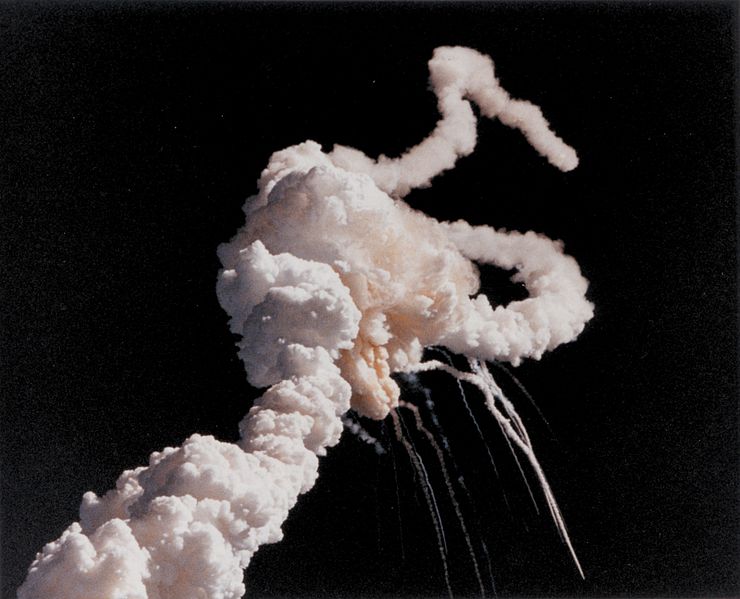On January 28, 1986, I had gone with a friend and colleague to lunch. We had gone a bit early because we wanted to watch the space shuttle take off. What we saw, what we will never forget, it is the image shown in Figure 1. Seventy-three seconds into the flight the Space Shuttle Challenger blew up, killing all on board. If ever an image was a meme, this is it. Whenever you mention the disaster by name, this is the image that comes to mind. I think of those people and the terrible experiences they went through. It is one of those shared gruesome and terrible moments that haunt the collective memory of our culture.
That night, President Regan went on television to speak to the nation and he said something truly remarkable:
“The crew of the space shuttle Challenger honored us by the manner in which they lived their lives. We will never forget them, nor the last time we saw them, this morning, as they prepared for their journey and waved good-bye and ‘slipped the surly bonds of earth’ to ‘touch the face of God.”
Regan associated the image of the disaster with our image of God. He associated the image, associated the meme, with the sacred. He elevated the ordeal of those lost souls to an epic plane. And now whenever the subject of the disaster is mentioned not only do I see that image and think about the astronauts and their suffering, but I hear those words, and I try to imagine the image or meme that those words create in my mind, in our collective minds.
We have a set of memes in our culture that define the sacred. And whenever an image, a photograph, touches upon the sacred, it is elevated. It resonates with what is most deeply human.

